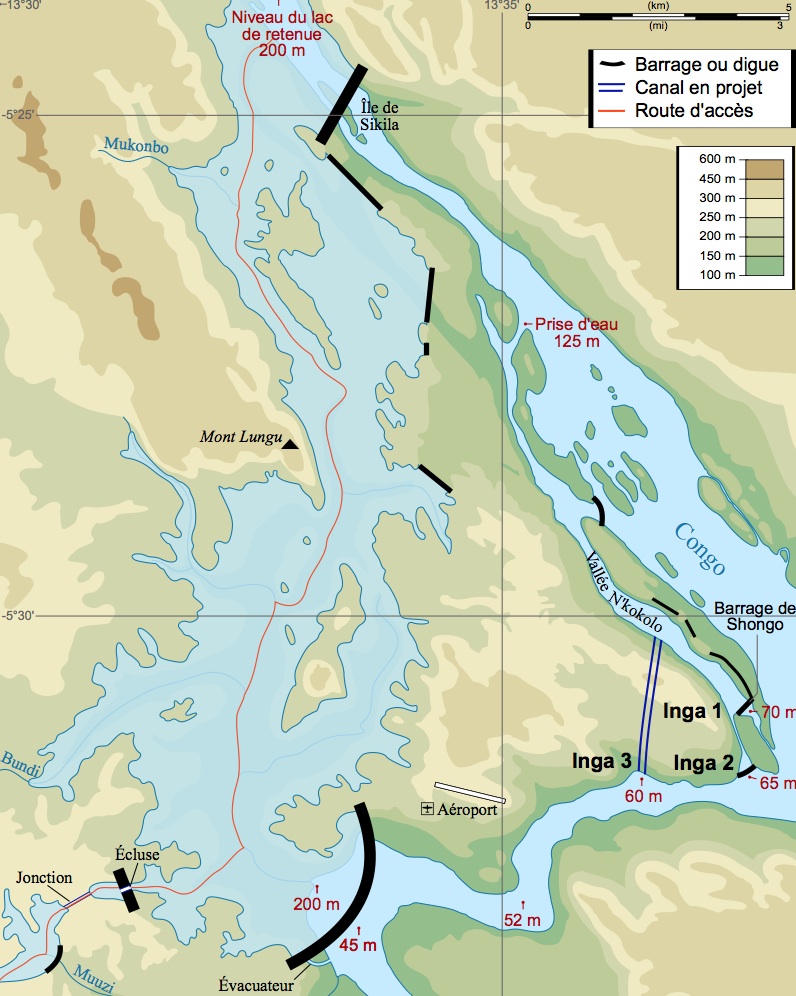The government of the Democratic Republic of Congo has said there are two teams left in the race to build the $12bn first phase of the Grand Inga dam complex.
One is a Chinese team composed of hydropower specialists Three Gorges and Sinohydro; the other is a Spanish group is made up of giant contractor Grupo ACS (Actividades de Construccion y Servicios) and infrastructure group Eurofinsa, both based in Madrid.
Bruno Kapandji, the DRC’s former foreign minister and the head of the Development and Promotion Office for the Grand Inga Project, told a press conference on Friday that the Chinese group was promising to bring the project online more quickly.
He said: “The Spanish said they’re going to finish all the works in five to six years. The Chinese candidate said a maximum of five years – and if they’re free to do whatever they want to do they can even do it in four.”
A third bidder, composed of South Korea’s Posco and Daewoo in partnership with Canada’s SNC-Lavalin withdrew in March. Eleven teams have expressed an interest in the dam since it was announced in 2010.
A winner will be named by August with a view to beginning construction in June 2017.
This scheme will involve building Inga 3, the DRC’s third dam on the Inga Falls. This is expected to produce 4.8GW of electricity, almost double the country’s present installed generating capacity.

The location of the two existing Inga dams and possible sites for future construction (Wikimedia Commons)
This dam is the first of a series that are expected to be built on the Inga Falls. In its final form, the scheme may consist of about eight power stations built over about 50 years for a sum of something like $100bn.
The total installed capacity of the falls will be between 40 and 50GW, making it the largest power producer on Earth and the most important piece of infrastructure in sub-Saharan Africa.
The site of the Grand Inga is unique because it allows hydropower dams to be built near the mouth of a major river, where its kinetic energy is greatest. Usually possible dam sites are located further upriver, where the valley is narrower. About 42 million tonnes of water flow through the lower Congo every second, the second greatest volume after the Amazon. Â
The DRC has already found a number of buyers for its future electricity. According to the World Bank, South Africa will buy 2.5GW beginning in 2020 and the mining industry will buy 1.3GW. A deal with Nigeria may be signed next month, and a memorandum of understanding was signed with Egypt in February during a visit by Matata Ponyo, the DRC’s prime minister, to Cairo.
The remainder will go to the Société Nationale d’Électricité, the DRC’s national utility. This will provide power to about 7 million people in the Kinshasa city region. The aim is to provide all unmet electricity needs there by 2025.
Top image: The River Congo as it enters the Inga Falls (Wikimedia Commons)










